It has been several days already since I made a last addition to this blog. Checking tonight for any new comment, I saw that a third follower has joined us. Welcome aboard Paul! As your avatar reads “Veloce”, it was tempting then to follow on with a post about an Alfa Romeo model.
A little history
Alfa Romeo was, without doubt, one of Italy’s prides during the Twenties and Thirties. If not for its lower range of models, which were only relatively cheap, it could easily be said to be some sort of “pre-war Ferrari” thanks to its appealing high-performance road cars and its solid racing credentials. Indeed, Benito Mussolini himself, who shared with his fellow dictator Adolf Hitler a passion for automobiles, didn’t resist a veiled allusion to Alfa Romeo when someone pinpointed at Italy’s dismal industrial capacities in the event of a war, answering that the people who passionately built the race cars that amazed the world would produce the best weapons, albeit in limited quantities. Il Duce ha sempre ragione, read the propaganda posters on Rome’s walls – “the Duce is always right”. Well, if he would have proved wrong only once, this would have been it. By 1945, Italy had been crushed, though through the timely coat-turning of the nation’s Southern half it still could pretend to stand among the victors. This didn’t change anything to the fact that the country was now ravaged, impoverished and divided – not anymore the ideal place to build one of the most exclusive automobiles in the world.
Still, Alfa Romeo had no other choice at first than to restart the production of an old model, the 6C-2500. Change was in the air, though. In 1950, the Milanese company introduced the 1900 model at the Paris motor show. Still not a car for the common man, the 1900 was nonetheless mass-produced, a sign of things to come. Four years later, a more affordable Alfa was finally launched: the 1300 cc Giulietta.
Apart from its elegant style, the Giulietta’s brilliant engine made it a worthy heir to a long line of fashionable thoroughbreds. A brand new design, this little twin-cam made extensive use of light alloy, displaced 1290 cc and was rated at 53 bhp. Fitted with a 4-speed gearbox at a time when most of the cars of its size had only 3, the Giulietta had a top speed of 140 kph – for the time, this was an impressive performance. Even more remarkable was the coupe’s engine, from which Alfa Romeo was able to get 62 hp per litre, hence an output of no less than 80 bhp from the same little 1.3-litre.
The Giulietta was so much performance-oriented that the saloon wasn’t even the first model Alfa Romeo to be unveiled. This “Berlina” first emerged during the spring of 1955 at the Turin motor show, a few months after the coupe, dubbed “Sprint” and penned by Bertone, but before the “Spider” convertible credited to Pininfarina. So potent was the coupe’s engine that it made the saloon’s block, though lively, look paltry by comparison. Alfa Romeo brought a remedy in 1957 by adding a “TI” (for Turismo Internazionale) variant of the 4-door in 1957. With 65 bhp, it soon became a favourite among Italian rally drivers. Ever more powerful versions were to follow: the ultimate performance machine developed from the Giulietta was the Sprint Zagato or SZ, a coupe flirting with the 200 kph mark thanks to 116 bhp and a very aerodynamic body.
Though it aged relatively well, receiving only mild facelifts in 1959 and 1961, the Giulietta was to be replaced by a brand new car, the Giulia, in 1964. The latter’s body was of the newly-favoured boxy type, but the valiant 1.3-litre had found its way under its hood. A few further Giulietta coupes and convertibles were built until 1965, bringing the final tally to about 132,000 – nothing to compare anymore with the production figures of the hand-built models of the Thirties.
About the models
Model: Alfa Romeo Giulietta TI
Year: 1962
Event: 1965 Rally di San Martino di Castrozza, driven by Zandonà, co-pilot Andretta (result unknown from me, please help if you can!)
Maker: unknown (some of these Alfas were also sold in boxes by Maxi Cars, but it seems this company didn't produce them, but only sold leftovers from the series)
Scale: 1/43
Distributed by: Fabbri as no.11 of its Alfa Romeo Sport Collection press series
Acquired: brand new, in December 2006, in Hong Kong, S.A.R.
Beautiful saloon – it makes you regret that several wonderful series by Fabbri and De Agostini such as this one are reserved to the Italian market. My rating: 13/20.
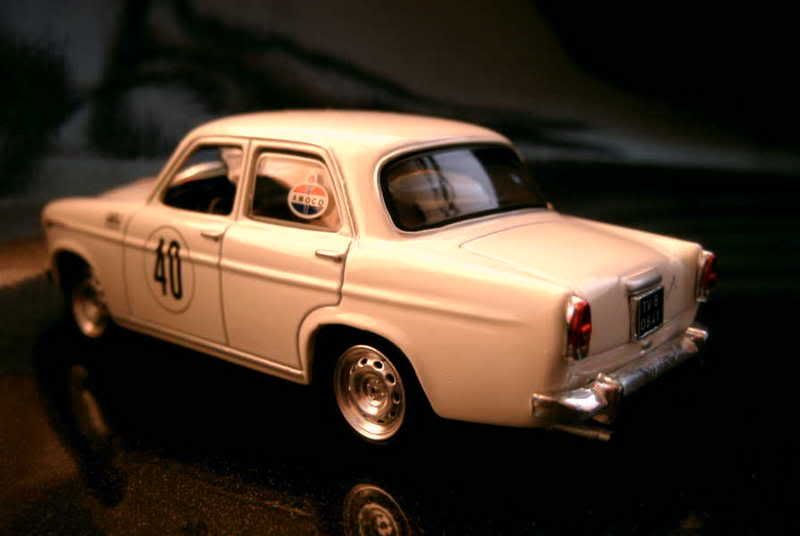
Model: Alfa Romeo Giulietta Sprint
Year: 1960
Maker: Detail Cars
Scale: 1/43
Distributed by: Detail Cars, “Platinum” series
Acquired: brand new, in May 2005, in Manila, Philippines
Detail Cars produced this gorgeous Sprint version, which moulds passed to Solido after the Italian brand’s demise. This original model includes details that Solido has since omitted for reasons of cost, notably the seats’ elegant colour-keyed linings. I’d give 14/20 to this die-cast.
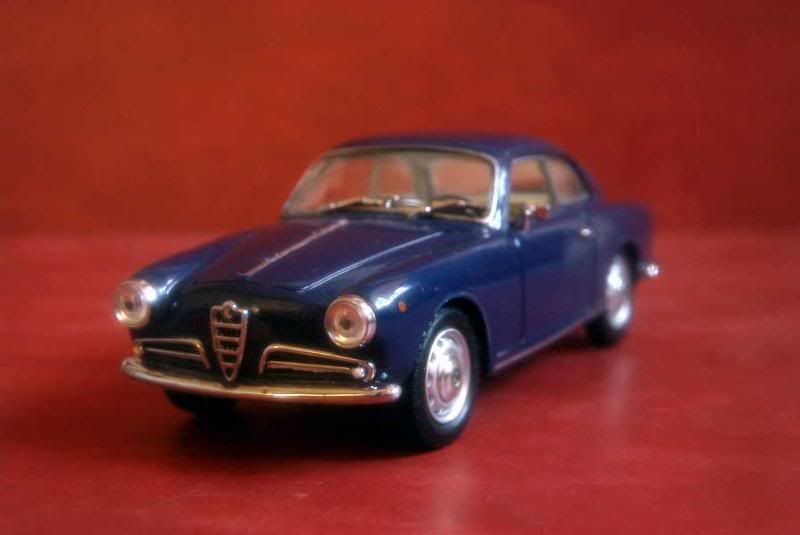
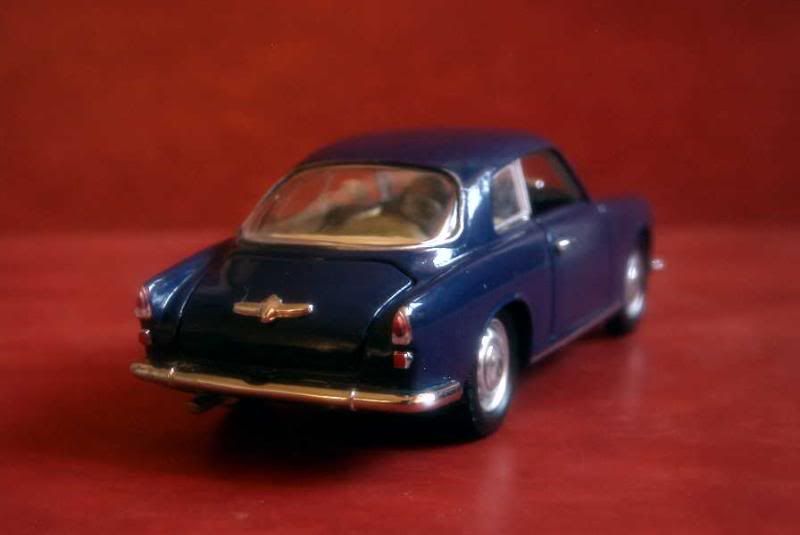
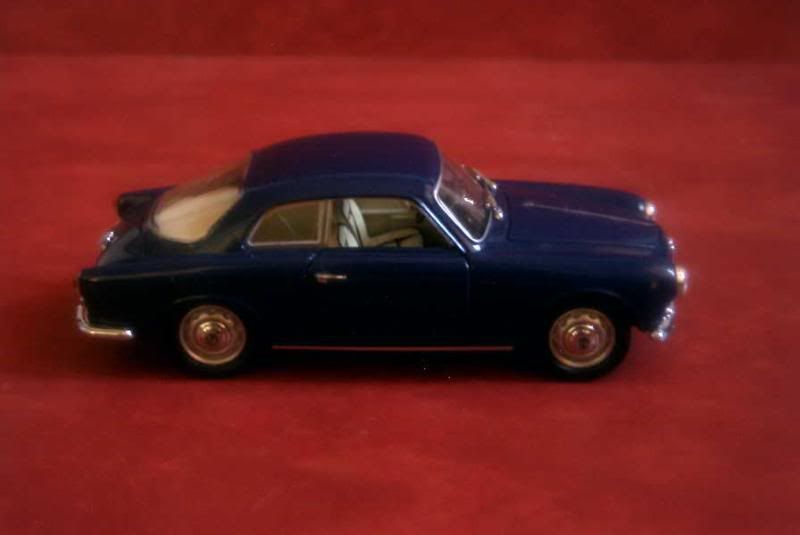
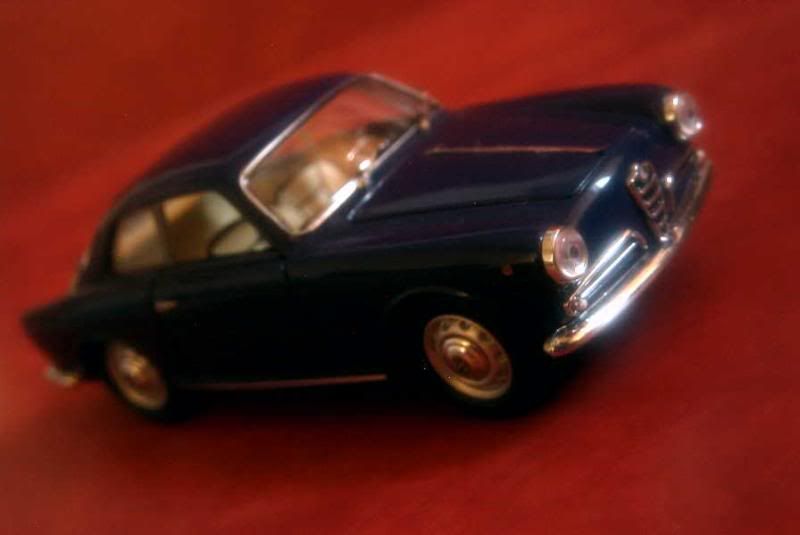
Model: Alfa Romeo Giulietta Spider
Year: 1962
Maker: New Ray
Scale: 1/43
Distributed by: New Ray, "City Cruiser Collection"
Acquired: brand new, in November 2003, in Kalibo, Philippines
Price is the only thing that should make you buy a New Ray model – still, think it twice. Though the body is almost correct, details as the wheels or the interior are extremely crude. The headlights are simply represented by silver disks – in my case, one was even missing, so I had to “steal” those, virtually identical, of one of the two New Ray MGAs I had. It would be unreasonable to award more than 5/20.
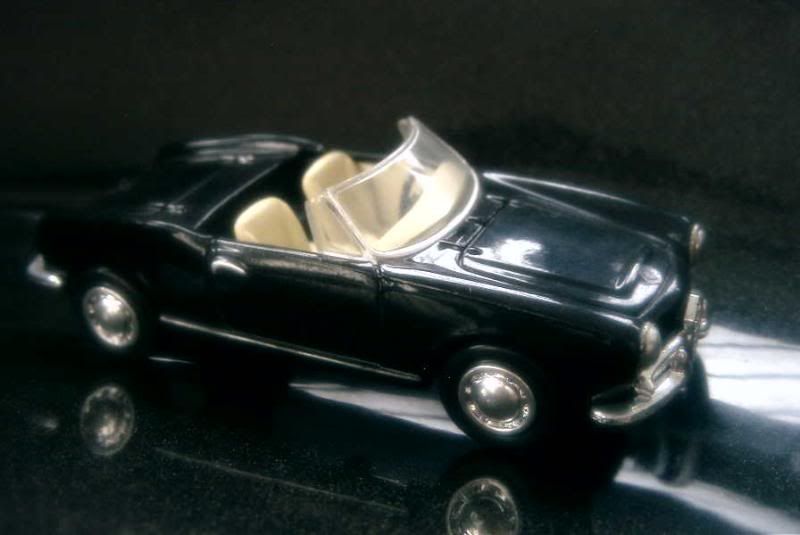
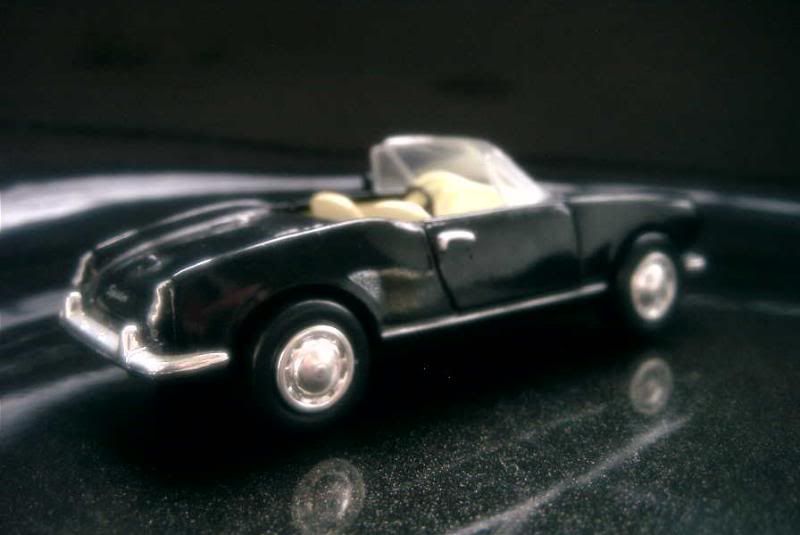
Model: Alfa Romeo Giulietta Sprint Zagato
Year: 1963
Event: 1963 Le Mans 24 hours, driven by Giancarlo Sala and Romolo Rossi (retired)
Maker: unknown (some of these Alfas were also sold in boxes by Maxi Cars, but it seems this company didn't produce them, but only sold leftovers from the series)
Scale: 1/43
Distributed by: Fabbri as no.37 of its Alfa Romeo Sport Collection press series
Acquired: new without box and with mismatched stand (probably a quality control reject), in December 2006, in Hong Kong, S.A.R.
I hardly let pass a Le Mans car when I see one, so I got this one right away. Too bad I didn’t take time to notice that one windshield wiper was absent. Many among you would say that the missing item is rather straightforward to replace, but I have two left hands… Forgetting this little problem, Fabbri again proposed a pleasant model well worth 12/20.
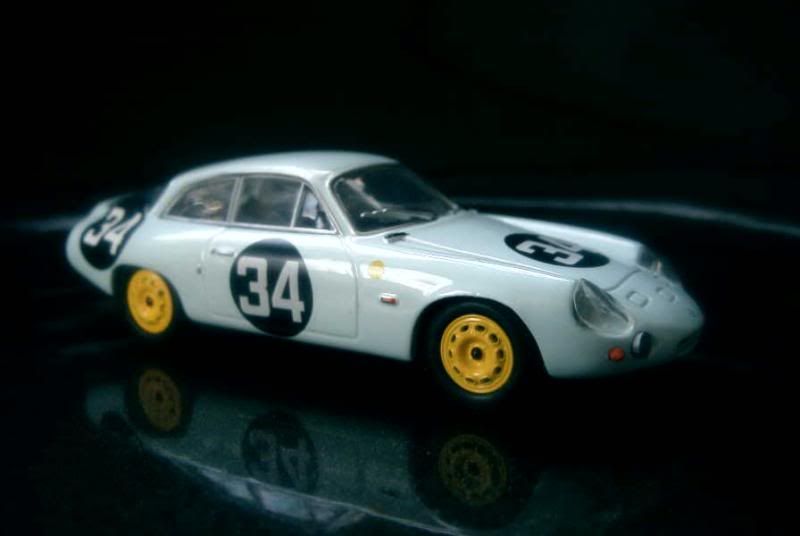
A little history
Alfa Romeo was, without doubt, one of Italy’s prides during the Twenties and Thirties. If not for its lower range of models, which were only relatively cheap, it could easily be said to be some sort of “pre-war Ferrari” thanks to its appealing high-performance road cars and its solid racing credentials. Indeed, Benito Mussolini himself, who shared with his fellow dictator Adolf Hitler a passion for automobiles, didn’t resist a veiled allusion to Alfa Romeo when someone pinpointed at Italy’s dismal industrial capacities in the event of a war, answering that the people who passionately built the race cars that amazed the world would produce the best weapons, albeit in limited quantities. Il Duce ha sempre ragione, read the propaganda posters on Rome’s walls – “the Duce is always right”. Well, if he would have proved wrong only once, this would have been it. By 1945, Italy had been crushed, though through the timely coat-turning of the nation’s Southern half it still could pretend to stand among the victors. This didn’t change anything to the fact that the country was now ravaged, impoverished and divided – not anymore the ideal place to build one of the most exclusive automobiles in the world.
Still, Alfa Romeo had no other choice at first than to restart the production of an old model, the 6C-2500. Change was in the air, though. In 1950, the Milanese company introduced the 1900 model at the Paris motor show. Still not a car for the common man, the 1900 was nonetheless mass-produced, a sign of things to come. Four years later, a more affordable Alfa was finally launched: the 1300 cc Giulietta.
Apart from its elegant style, the Giulietta’s brilliant engine made it a worthy heir to a long line of fashionable thoroughbreds. A brand new design, this little twin-cam made extensive use of light alloy, displaced 1290 cc and was rated at 53 bhp. Fitted with a 4-speed gearbox at a time when most of the cars of its size had only 3, the Giulietta had a top speed of 140 kph – for the time, this was an impressive performance. Even more remarkable was the coupe’s engine, from which Alfa Romeo was able to get 62 hp per litre, hence an output of no less than 80 bhp from the same little 1.3-litre.
The Giulietta was so much performance-oriented that the saloon wasn’t even the first model Alfa Romeo to be unveiled. This “Berlina” first emerged during the spring of 1955 at the Turin motor show, a few months after the coupe, dubbed “Sprint” and penned by Bertone, but before the “Spider” convertible credited to Pininfarina. So potent was the coupe’s engine that it made the saloon’s block, though lively, look paltry by comparison. Alfa Romeo brought a remedy in 1957 by adding a “TI” (for Turismo Internazionale) variant of the 4-door in 1957. With 65 bhp, it soon became a favourite among Italian rally drivers. Ever more powerful versions were to follow: the ultimate performance machine developed from the Giulietta was the Sprint Zagato or SZ, a coupe flirting with the 200 kph mark thanks to 116 bhp and a very aerodynamic body.
Though it aged relatively well, receiving only mild facelifts in 1959 and 1961, the Giulietta was to be replaced by a brand new car, the Giulia, in 1964. The latter’s body was of the newly-favoured boxy type, but the valiant 1.3-litre had found its way under its hood. A few further Giulietta coupes and convertibles were built until 1965, bringing the final tally to about 132,000 – nothing to compare anymore with the production figures of the hand-built models of the Thirties.
About the models
Model: Alfa Romeo Giulietta TI
Year: 1962
Event: 1965 Rally di San Martino di Castrozza, driven by Zandonà, co-pilot Andretta (result unknown from me, please help if you can!)
Maker: unknown (some of these Alfas were also sold in boxes by Maxi Cars, but it seems this company didn't produce them, but only sold leftovers from the series)
Scale: 1/43
Distributed by: Fabbri as no.11 of its Alfa Romeo Sport Collection press series
Acquired: brand new, in December 2006, in Hong Kong, S.A.R.
Beautiful saloon – it makes you regret that several wonderful series by Fabbri and De Agostini such as this one are reserved to the Italian market. My rating: 13/20.

Model: Alfa Romeo Giulietta Sprint
Year: 1960
Maker: Detail Cars
Scale: 1/43
Distributed by: Detail Cars, “Platinum” series
Acquired: brand new, in May 2005, in Manila, Philippines
Detail Cars produced this gorgeous Sprint version, which moulds passed to Solido after the Italian brand’s demise. This original model includes details that Solido has since omitted for reasons of cost, notably the seats’ elegant colour-keyed linings. I’d give 14/20 to this die-cast.




Model: Alfa Romeo Giulietta Spider
Year: 1962
Maker: New Ray
Scale: 1/43
Distributed by: New Ray, "City Cruiser Collection"
Acquired: brand new, in November 2003, in Kalibo, Philippines
Price is the only thing that should make you buy a New Ray model – still, think it twice. Though the body is almost correct, details as the wheels or the interior are extremely crude. The headlights are simply represented by silver disks – in my case, one was even missing, so I had to “steal” those, virtually identical, of one of the two New Ray MGAs I had. It would be unreasonable to award more than 5/20.


Model: Alfa Romeo Giulietta Sprint Zagato
Year: 1963
Event: 1963 Le Mans 24 hours, driven by Giancarlo Sala and Romolo Rossi (retired)
Maker: unknown (some of these Alfas were also sold in boxes by Maxi Cars, but it seems this company didn't produce them, but only sold leftovers from the series)
Scale: 1/43
Distributed by: Fabbri as no.37 of its Alfa Romeo Sport Collection press series
Acquired: new without box and with mismatched stand (probably a quality control reject), in December 2006, in Hong Kong, S.A.R.
I hardly let pass a Le Mans car when I see one, so I got this one right away. Too bad I didn’t take time to notice that one windshield wiper was absent. Many among you would say that the missing item is rather straightforward to replace, but I have two left hands… Forgetting this little problem, Fabbri again proposed a pleasant model well worth 12/20.




No comments:
Post a Comment